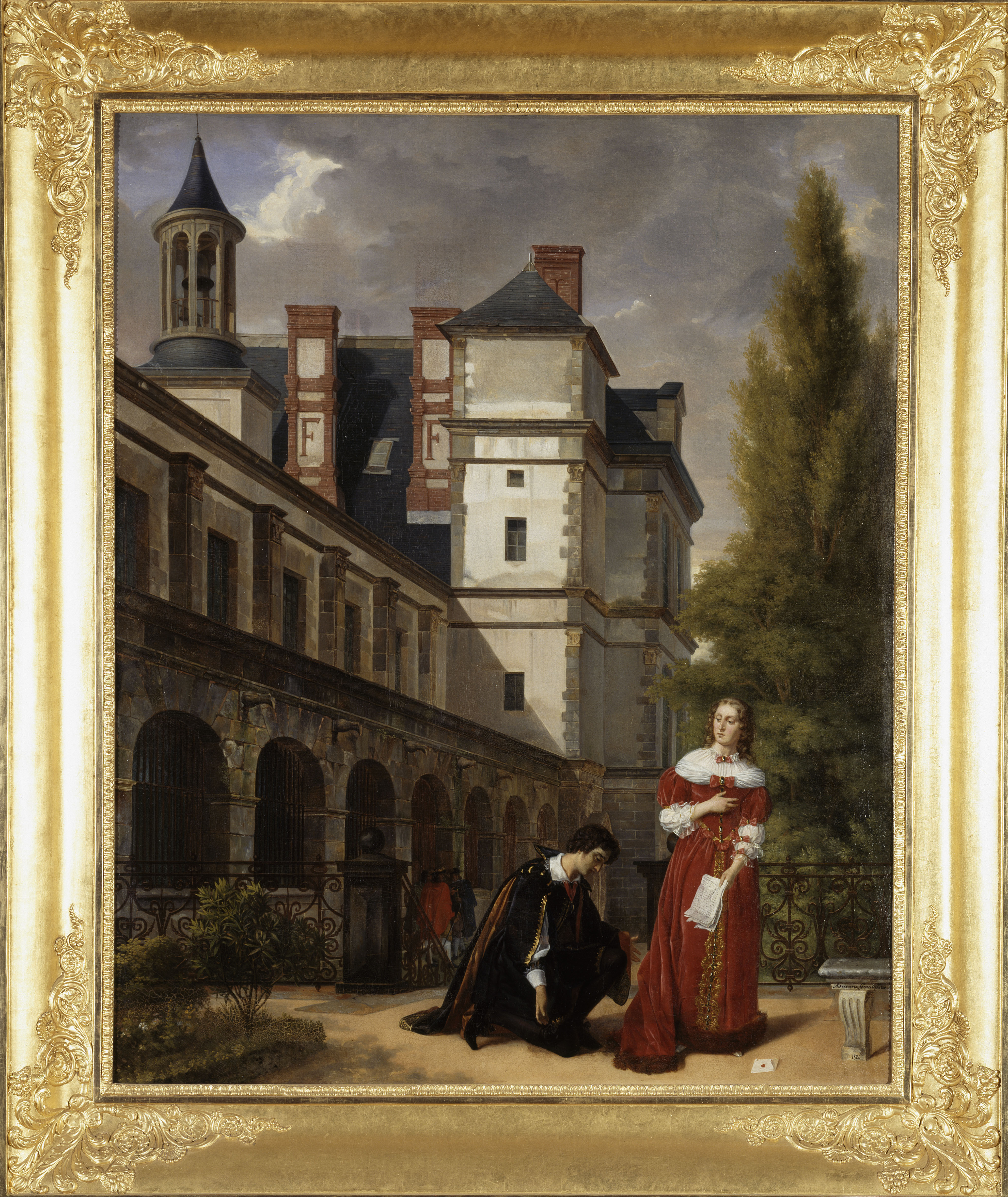
Adrienne Marie Louise Grandpierre-Deverzy (1798-1869)
1824
H. 125 cm; L. 105, 5 cm
Oil on canvas
Château de Fontainebleau, Inv 4996
Gallery of Splendours.
The Château de Fontainebleau was scene of a bloodstained event in 1657. Queen Christina of Sweden had come to France on the invitation of Cardinal Mazarin. After suspecting her equerry Giovanni Monaldeschi of committing treason, she supposedly had him executed. He is still buried in the church in Avon and his chain mail and sword are both housed at the Château de Fontainebleau. In this painting, Christina of Sweden is handing Monaldeschi the the letters which confirmed his guilt, while he is on his knees begging for clemency. They are both dressed in the style of the mid 17th century. In the background, the Château de Fontainebleau sets the scene – the F for François Ist is emblazoned across the chimney stacks.
This tragic incident became a preferred source of inspiration among artists who cultivated a taste for artistic ‘historicism’ in painting, sculpture and literature in the Romantic era. As was the case with Alexandre Dumas’ play Christine and Félicie de Fauveau’s sculpture Christine of Sweden Refusing to Spare the Life of Her Equerry Monaldeschi.
Continuing to Explore